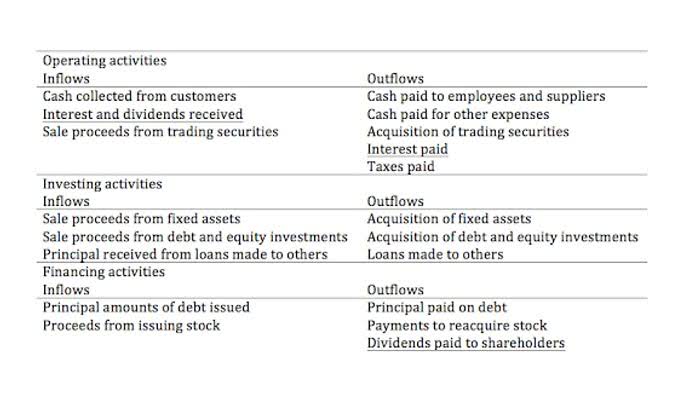
Determining if your firm’s TIE ratio is financially healthy depends on your industry and your capital structure.Capital-intensive businesses require a large amount of capital to operate. Banks, for example, have to build and staff physical bank locations and make large investments in IT. Manufacturers make large investments in machinery, equipment, and other fixed assets.If your firm must raise a large amount of capital, you may use both equity and debt, and debt generates interest expense. Ideally, a business should generate enough earnings to pay for interest expenses and to fund other needs.
Debt Structure and Management

The times interest ratio is expressed numerically rather than as a percentage. The ratio reveals how many times a corporation might pay interest with its pre-tax income. Another strategy is to use available cash flow to pay down debt double declining balance depreciation method faster and eliminate some of your interest expense.
Everything You Need to Master Growth Equity Interviews
The TIE ratio may be based on your company’s recent current income for the latest year reported compared to interest expense on debt, or computed quarterly or monthly. For this internal financial management purpose, you can use trailing 12-month totals to approximate an annual interest expense. To provide meaningful insight, times interest earned should be benchmarked to your industry. The results may vary based on the types of financing used, seasonality during shorter times interest earned ratio periods, and other industry-specific factors. In each industry, the measure of a company’s time interest earned may be higher or lower than the overall 2.5+ statistic for TIE adequacy. To improve its times interest earned ratio, a company can increase earnings, reduce expenses, pay off debt, and refinance current debt at lower rates.
Company: Allied Industries
In short, it indicates the level of safety that a company has for debt interest repayment. More in detail, its value and, most importantly, its trend can help us predict the company’s future financial situation and see if it will go through stability or likely bankruptcy. The ideal TIE Ratio can significantly vary by industry due to differences in operating margins and capital structures. High-capital industries may have lower typical TIE Ratios compared to service-based sectors.
EBIT (Earnings Before Interest and Taxes)
Financial planners and analysts use the TIE ratio to foresee potential financial distress and advise on how to avoid it, such as adjusting the capital structure or cutting unnecessary expenses. EBIT is used to analyze a company’s core business performance without deducting expenses that are influenced by unrelated factors like how it is financed or how much the company owes in taxes. Yes, if a company’s EBIT is negative, the TIE ratio will also be negative, indicating that the company is not generating sufficient earnings to cover its interest expenses. The P/E ratio is a valuation ratio that compares a company’s current share price to its earnings per share.
What Are the Limitations of the Interest Coverage Ratio?
- Because interest payments are set, long-term expenses, are employed as the metric.
- With that said, it’s easy to rack up debt from different sources without a realistic plan to pay them off.
- Your net income is the amount you’ll be left with after factoring in these outflows.
- By incorporating this knowledge into your investment research or corporate financial planning, you can make more informed decisions about company financial health and debt sustainability.
- EBIT is used primarily because it gives a more accurate picture of the revenues that are available to fund a company’s interest payments.
- A companys capitalization is the amount of money it has raised by issuing stock or debt, and those choices impact its TIE ratio.
- Using historical data, along with information from the current period, will give insight into operational efficiencies, profitability, and the company’s capacity to manage its obligations over time.
From the average price of 620 per share, it has come down to 49 per share market price. The Analyst is trying to understand the reason for the same, and initializing wants to compute the solvency ratios. We will also provide examples to clarify the formula for the times interest earned ratio. The significance of the interest coverage ratio value will be determined by the amount of risk you’re comfortable with as an investor.
- The steps to calculate the times interest earned ratio (TIE) are as follows.
- Times interest earned ratio is an indicator of a company’s ability to pay off its interest expense with available earnings.
- This may cause the company to face a lack of profitability and challenges related to sustained growth in the long term.
- Companies and investors must regularly scrutinize this ratio alongside other solvency ratios on income and financial statements to ensure a secure financial footing.
- This indicates that Harry’s is managing its creditworthiness well, as it is continually able to increase its profitability without taking on additional debt.
- The Times Interest Earned Ratio (TIER) compares a company’s income to its interest payments.
The investment return you could have gotten if invested in Lockheed in 2010 would be 661%. This result can be easily verified by knowing the historical stock price and by using our famous return of gross vs net your investment calculator. That is why people consider it a reliable company worth having in their retirement investing plan. This section will compare Lockheed Martin Corp and Boeing Company, both related to the airplane manufacturing industry, based on their interest coverage ratio. Lenders become more cautious since it means the risk of credit default for them increases.

Interest payments are used as the metric, since they are fixed, long-term expenses. If a business struggles to pay fixed expenses like interest, it runs the risk of going bankrupt. In this way, the ratio gives an early indication that a business might need to pay off existing debts before taking on more. If you’re a small business with a limited amount of debt, the times interest earned ratio will likely not provide any new insight into your business operations.

Times interest earned ratio is a debt ratio whose purpose is to allow investors and creditors to measure the level of financial risk the company has. For example, if a company has an interest expense of \$50,000, it should ideally generate at least that amount in operating income to avoid financial distress. Lenders often stipulate a minimum TIE ratio in loan agreements, such as a requirement to maintain a TIE of 3x, meaning the operating income must be three times the interest expense. Failing to meet this requirement could lead to default on the loan, making the entire debt due immediately. Since EBIT is the numerator in the time interest earned ratio formula, any change in operating income directly influences the ratio.
- If the company does not generate enough operating income through normal business operations, it will be unable to service the debt’s interest.
- Freeing up cash through optimized working capital practices ensures that a business has the liquidity to meet interest payments.
- Conversely, a low TIE indicates that a company has a higher chance of defaulting.
- At this point, it can be challenging for businesses, especially those having to deal with large volumes of transactions from various sources to account for them correctly.
These automatic ratio calculations could include the times interest earned ratio (which may be called interest coverage ratio) from the company’s income statement data. The times interest earned ratio indicates how many times in a year (or other measured period) the amount of interest expense required to be paid is covered by earnings before interest and taxes. Times interest earned is one metric used to indicate a company’s financial strength or weakness that could lead to default or financial distress.